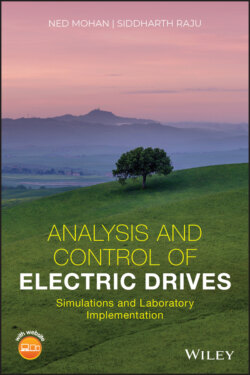Читать книгу Analysis and Control of Electric Drives - Ned Mohan - Страница 32
2
Understanding Mechanical System Requirements for Electric Drives 2‐1 INTRODUCTION
ОглавлениеElectric drives are an interface between an electrical system and a mechanical system, as Fig. 2-1 shows. They themselves consist of an electric machine and a power electronic converter. In subsequent chapters of this book, we will look at the power electronic converter and its role, as well as analyze electric machines and how they can be controlled, given the desired speed and position of the mechanical system.
Fig. 2-1 Block diagram of adjustable speed drives.
In electric drives, the power flow may be in either direction. For example, in an electric vehicle in driving mode, power flows from the electric source, a battery, to the electric motor, a mechanical system, through a power electronic converter. On the other hand, while slowing down the vehicle, the roles are reversed. The kinetic energy of the moving vehicle energy is extracted (called regenerative braking), and power flows from the electric motor to the battery, again through a power electronic converter.
Electric drives must satisfy the requirements of torque and speed imposed by mechanical loads connected to them. The load in Fig. 2-2, for example, may require a trapezoidal profile for the angular speed, as a function of time. In this chapter, we will briefly review the basic principles of mechanics for understanding the requirements imposed by mechanical systems on electric drives. This understanding is necessary for selecting an appropriate electric drive for a given application.
Fig. 2-2 (a) Electric drive system and (b) example of a load‐speed profile requirement.
This analysis equally applies when the load becomes the source of power, as in a wind turbine, and the electric drive generates and transfers power to the utility grid, an electric system.
